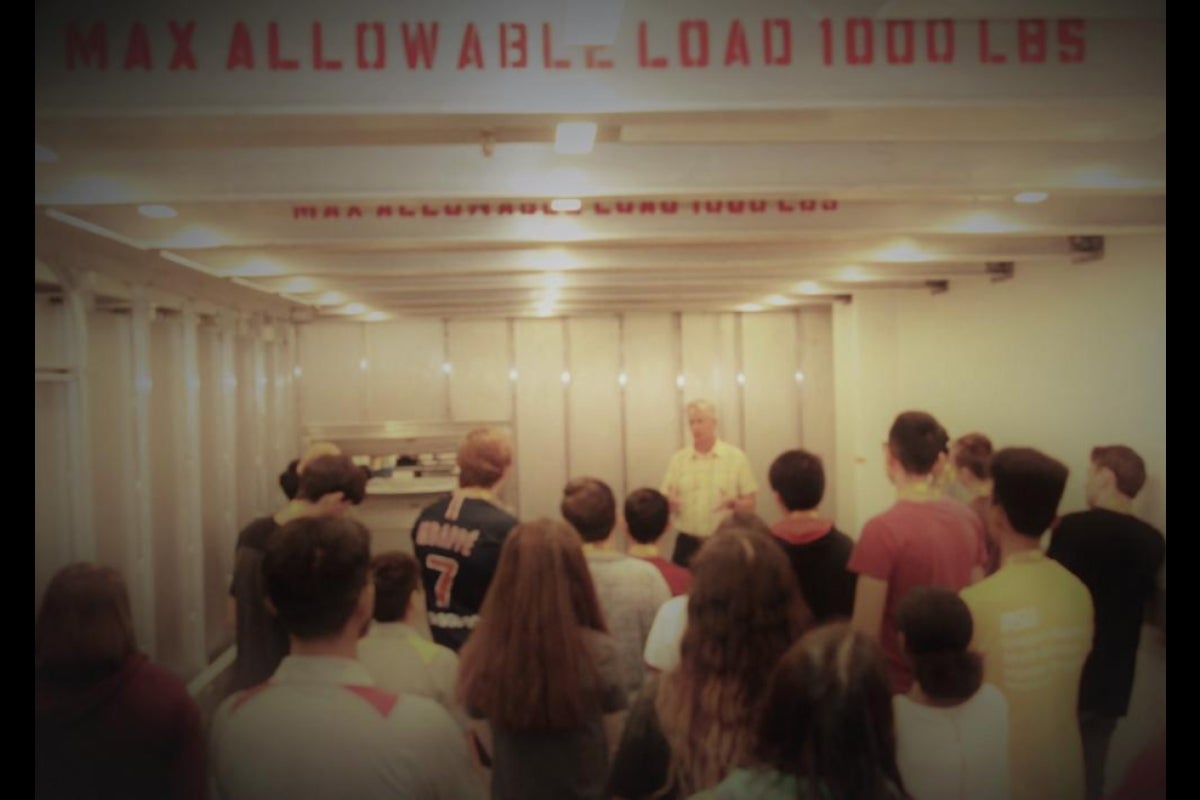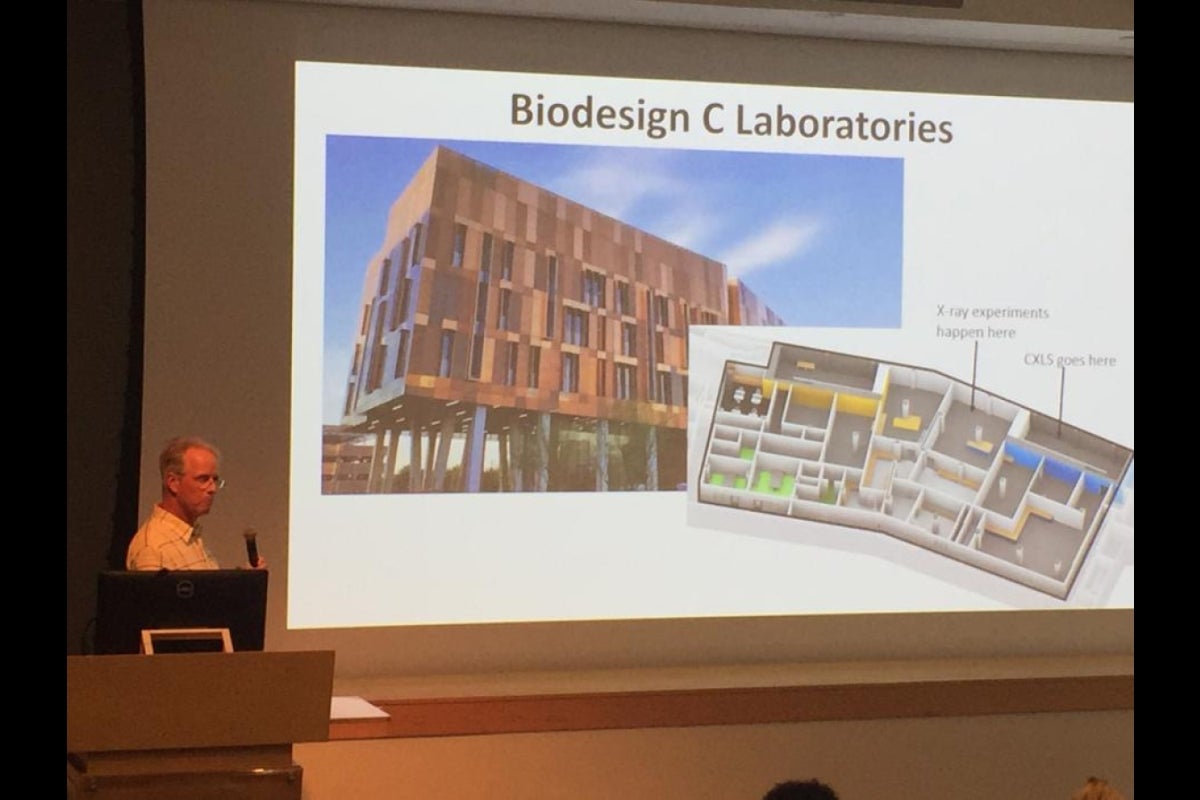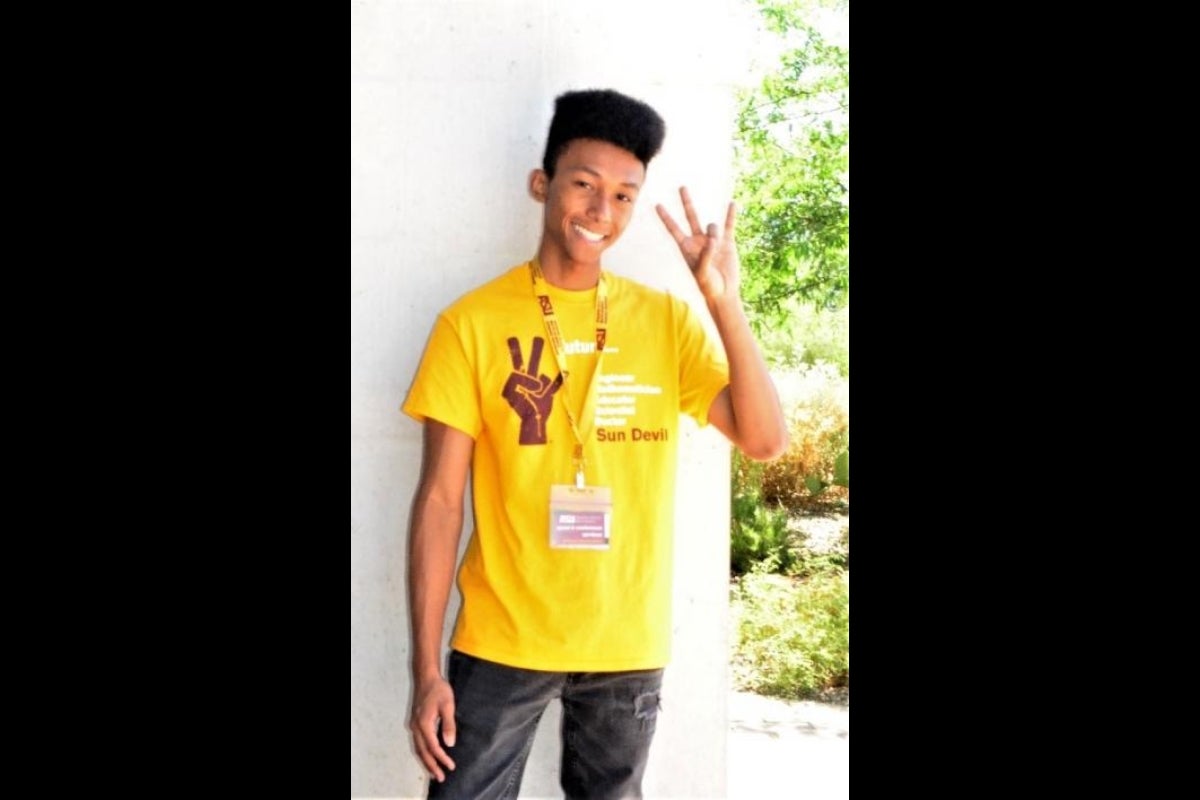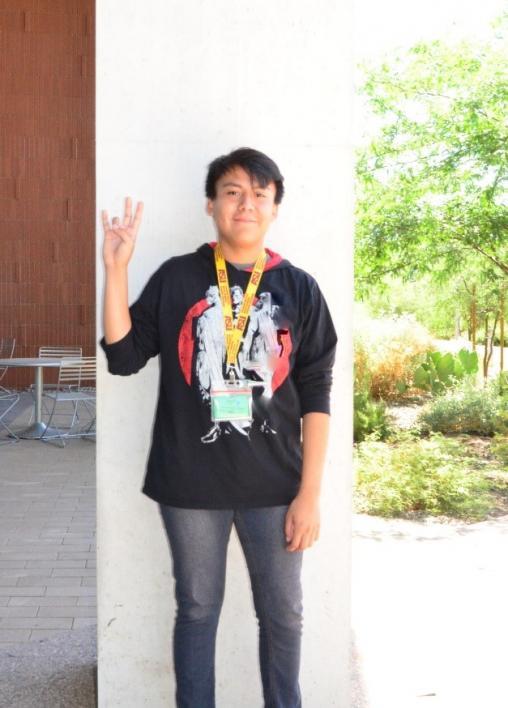First-gen students have a field day with math and science

William Graves is a researcher in the Biodesign Center for Applied Structural Discovery and associate professor in the Physics Department at ASU.
Google “Dr. Joaquin Bustoz,” and you can find a link to “Apreciación – In Memory of Dr. Joaquin Bustoz, Purveyor of Science and Equal Rights,” a song written by Russell Latterman, a graduate teaching assistant at the University of Wisconsin.
Latterman was one of the countless students whose lives were changed significantly by their connection to Bustoz, both while he was teaching at Arizona State University and even now after his death.
Last week, 76 students in ASU’s Joaquin Bustoz Math-Science Honors Program crowded the auditorium at the Biodesign Institute, eager to visit the Beus Compact X-ray Free Electron Laser (CXFEL) Lab. They got an insider’s look at the high-powered, “Star Wars”-like instrument that will enable scientists to see and understand the mysterious, microscopic world of proteins.
William Graves, a researcher in the Biodesign Center for Applied Structural Discovery and associate professor in the Physics Department, welcomed the students to the “vault” in the lower level of Biodesign C.
“We want the students to engage and ask questions,” Graves said. “Students here at ASU have the opportunity to work alongside researchers on real-world, cutting-edge science. In fact, student participation is key to making our science successful at the university.”
Graves was joined by Biodesign’s Mark Holl, associate director of technology development, and Marc Messerschmidt, who is also an associate research professor at the School of Molecular Sciences.
Graves himself is an example of getting into science from a nontraditional entry point.
“When I was 20, I didn’t really know what I wanted to do with my life. I had a real thing for singular, high-spec cars, so I spent 10 years tinkering around with Ferraris during the day and taking physics courses in the evening. I soon realized that I really liked elaborate machines with complex mechanisms,” he said. “Then I got a new job through friends and started working as a technician at a particle accelerator — a job that involved even more complex mechanisms. My passion for the physics of beams led me rapidly to a PhD so that I could spend even more time working on complex machines.”
Professor Bustoz died in a car accident in 2003, but his legacy lives on in the 3,000-plus students who have completed the summer program, an experience designed “to provide a successful university experience for students who are underrepresented in the mathematics and science fields and to enhance their prospects for future academic success. Special consideration is given to students who are first-generation college-bound and students representing diverse backgrounds from high schools throughout Arizona, including rural communities and the Navajo Nation.”
The Bustoz program is offered by ASU’s Simon A. Levin Mathematical, Computational and Modeling Sciences Center.
Students live on the Tempe campus while enrolled in a university-level mathematics course for college credit. They attend class six hours per day, with ample homework, quizzes, tests and tutoring. Students conduct research and present posters at a closing symposium. Tuition, room and board, textbooks and classroom expenses are provided.
Josiah Miles, a member of the Navajo Nation and spring graduate from Ganado High School, is also attending his second summer session. By the end of this session, he expects to have earned seven college credits.
“It is both tough and challenging because there is homework every night, but the program also connects you to what you can do with it in the future,” Miles said. Miles plans to begin studies in astrobiology and bio-geosciences at ASU this fall.
Andre Perry II, a graduate from the Cibola High School, is attending his first Bustoz program summer session. He said the program “really teaches you to discipline yourself and manage your time wisely.” Andre will be joining the ASU freshman class this fall to study astrophysics.
Cindy Barragan Romero, Bustoz program manager, confirms that the program is intense.
“The students are immersed in lectures, homework and daily tutoring from 9 to 5 for up to eight weeks in the summer,” she said. She considers the field trips “a well-deserved break that allows them to see what they can do with the content they are learning. It teaches them that there is a lot of opportunity out there.”
Bustoz’s obituary explained that his “defining characteristic was his passion not only for the field of mathematics, but also for helping talented minority students achieve their full potential. He recognized the hard work and long study required to achieve an understanding of mathematics and sciences, and he taught his students how to rise to the challenge of mastering those demanding fields of study.”
According to the Mathematical Association of America website, Bustoz, a Tempe native, was born to farmworkers who were also valued Tempe School District employees — so much so that the school district honored his parents by naming a school after them. Bustoz earned his doctorate in mathematics at Arizona State University in 1968. Although he spent seven years away as a faculty member at University of Cincinnati and a Fulbright lecturer in Colombia, he returned to ASU as a professor of mathematics in 1976. Bustoz took pride in his Tempe roots and dedicated years of community service to the underserved communities. In 1985, he launched the Summer Math-Science program for high school students. For his efforts, President Bill Clinton honored him in 1996 with the Presidential Award for Excellence in Science, Mathematics and Engineering Mentoring. Additionally, ASU presented him with the Wexler and Alumni Association service award. The Mathematical Association of America memorialized Bustoz in a dedicated biography, noting his dedication to increasing minority participation in math-related degrees and his intense commitment to working with Navajo and Pima Reservation students and teachers.
More Science and technology

Indigenous geneticists build unprecedented research community at ASU
When Krystal Tsosie (Diné) was an undergraduate at Arizona State University, there were no Indigenous faculty she could look to…

Pioneering professor of cultural evolution pens essays for leading academic journals
When Robert Boyd wrote his 1985 book “Culture and the Evolutionary Process,” cultural evolution was not considered a true…

Lucy's lasting legacy: Donald Johanson reflects on the discovery of a lifetime
Fifty years ago, in the dusty hills of Hadar, Ethiopia, a young paleoanthropologist, Donald Johanson, discovered what would…




